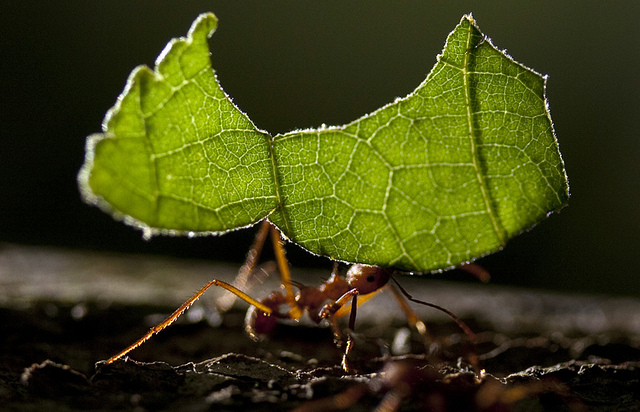Ant agriculture holds secrets for human sustainability
You’ve heard of ant farms — now meet the ant farmers
Tom Brown • May 22, 2025

A leaf cutter ant, which has evolved to chop up leaves and use them as fertiliser for fungi spores which the ants consume, is pictured carrying a leaf to the ant fungal garden. [Credit: Alejandro Soffia | CC BY-NC-ND 2.0]
A sweaty bearded man was making his way through the 19th century Nicaraguan jungle, when he stumbled upon a trail of ants.
The explorer, Thomas Belt, noticed the ants were carrying leaves. As Belt so often did on such occasions, he got out his notebook and began to draw them. When he looked closer, he saw that the ants were not eating the leaves, as thousands before him had supposed — in fact, they were feeding them to something: fungi.
Belt was the first Westerner to record ant agriculture, an evolutionary pattern which had begun millions of years ago. He was one of the first to observe that leafcutter ants use leaves as fertilizer instead of eating them, and their knowledge of agriculture would still be puzzling humans nearly 160 years after Belt’s adventures.
Ants got busy farming soon after the asteroid that killed the dinosaurs kicked up dust into the air, blocking out the sun and wiping out large mammals down on the earth’s surface. Ant populations adapted to cultivate fungi to sustain themselves, in a similar way that humans do with crops today, according to recent research from the Smithsonian Museum of Natural History.